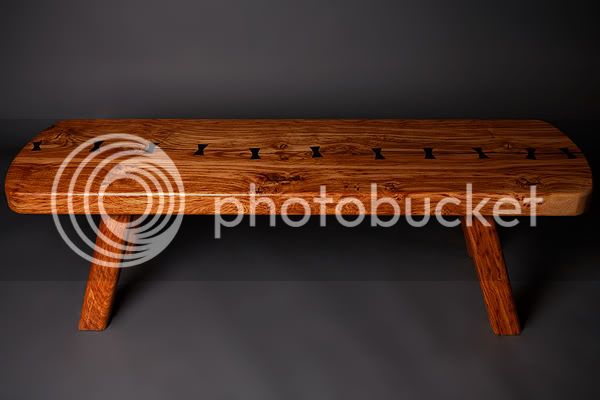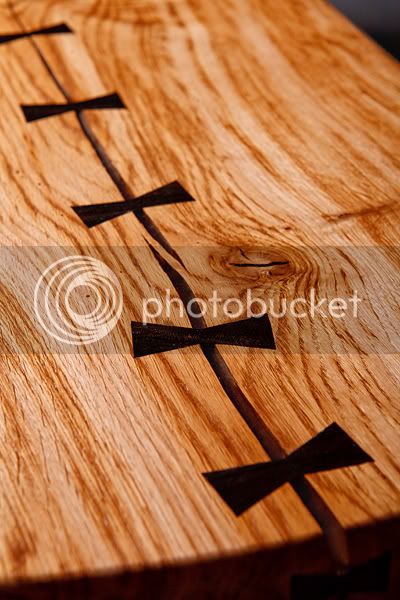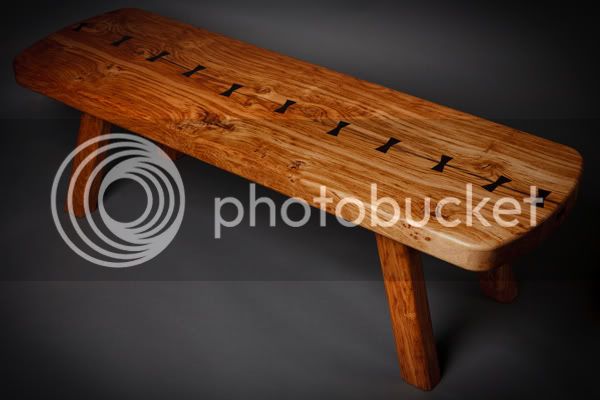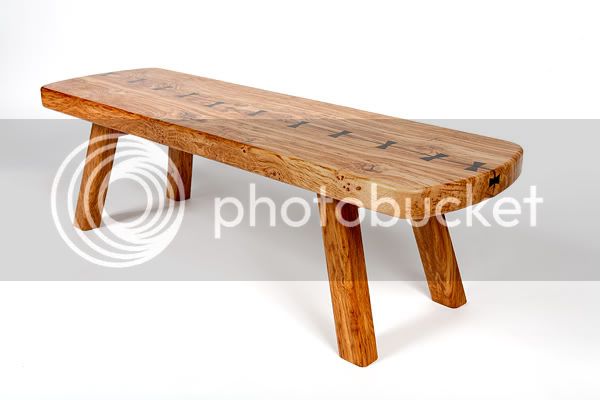Thanks for the positive, and the not so thoughts on this table.
A couple of points I would like to make, firstly I have used this method for more than ten years and have a very practical knowledge of it. So with that in mind, I think it will be OK. The resin I have used is epoxy and not polyester, and anyone who has used epoxy knows it sticks like .... rather than poly which is used as a casting resin so will release after time. I cleaned the cracks out first before pouring, though they were very clean anyway with just a few loose splinters that were blown out with the aid of a airline with a needle attached.
The method of using butterflies is not new, and has been used by restorers for a long time, which is where I directly copied it from, again from having practical knowledge of this method and having seen it used on a 17th century oak sideboard when I was a lad. As for the point about using black stained resin, its rather moot, because it looks black until you get 6" from it anyway because no light can penetrate from the bottom.
Now onto filling larger areas, this is possible and I have done it
here though my work isn't displayed, unless you care to explore Johns site and look for the victory range of tables..... I made the first four. It was a long time ago when John first came up with this method, and as far as I know these items are still OK. I will say that what I have shown here is a very easy pour, however they haven't always been so. A lot of time and Johns money was used in getting the method down for large pours, and I wouldn't recommend it for a novice.
I made this table with my children in mind, hence the more rounded feel, but would have done it this way because I don't like sharp edges anyway. The proportions are right in mine and my wife's eyes as we look at the piece right here and now, and thats what important. Thanks for everyones interest.






































